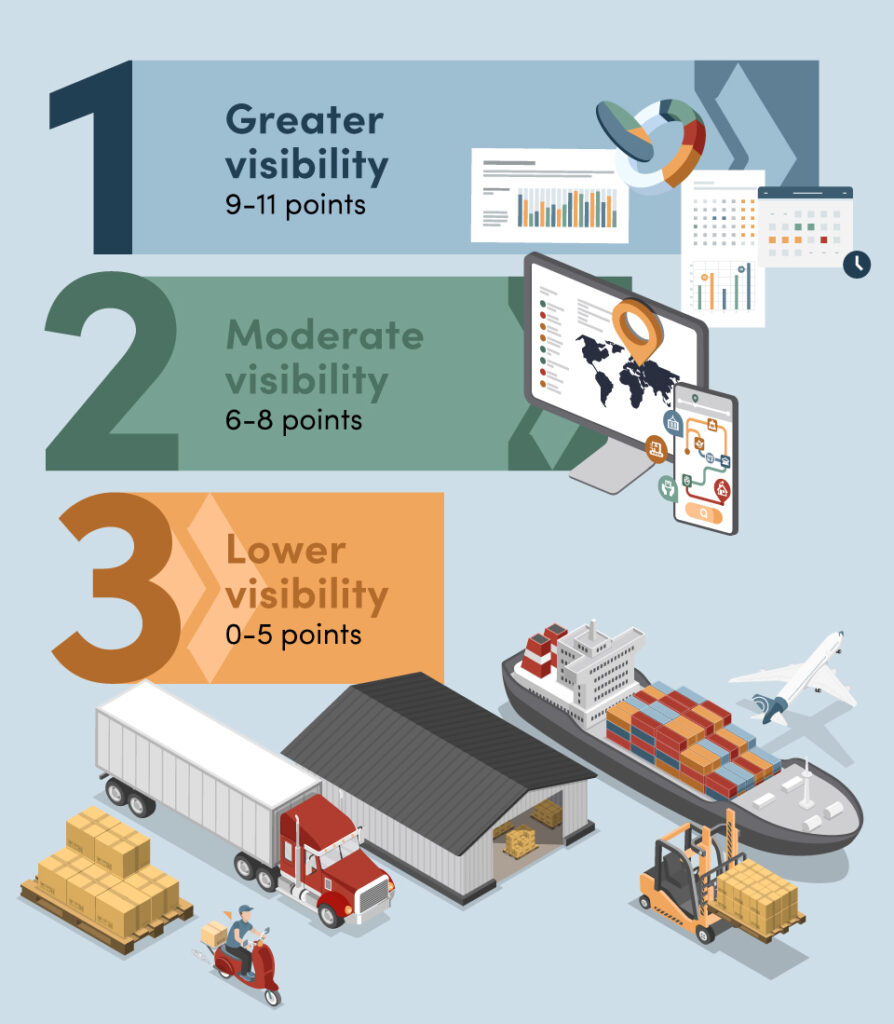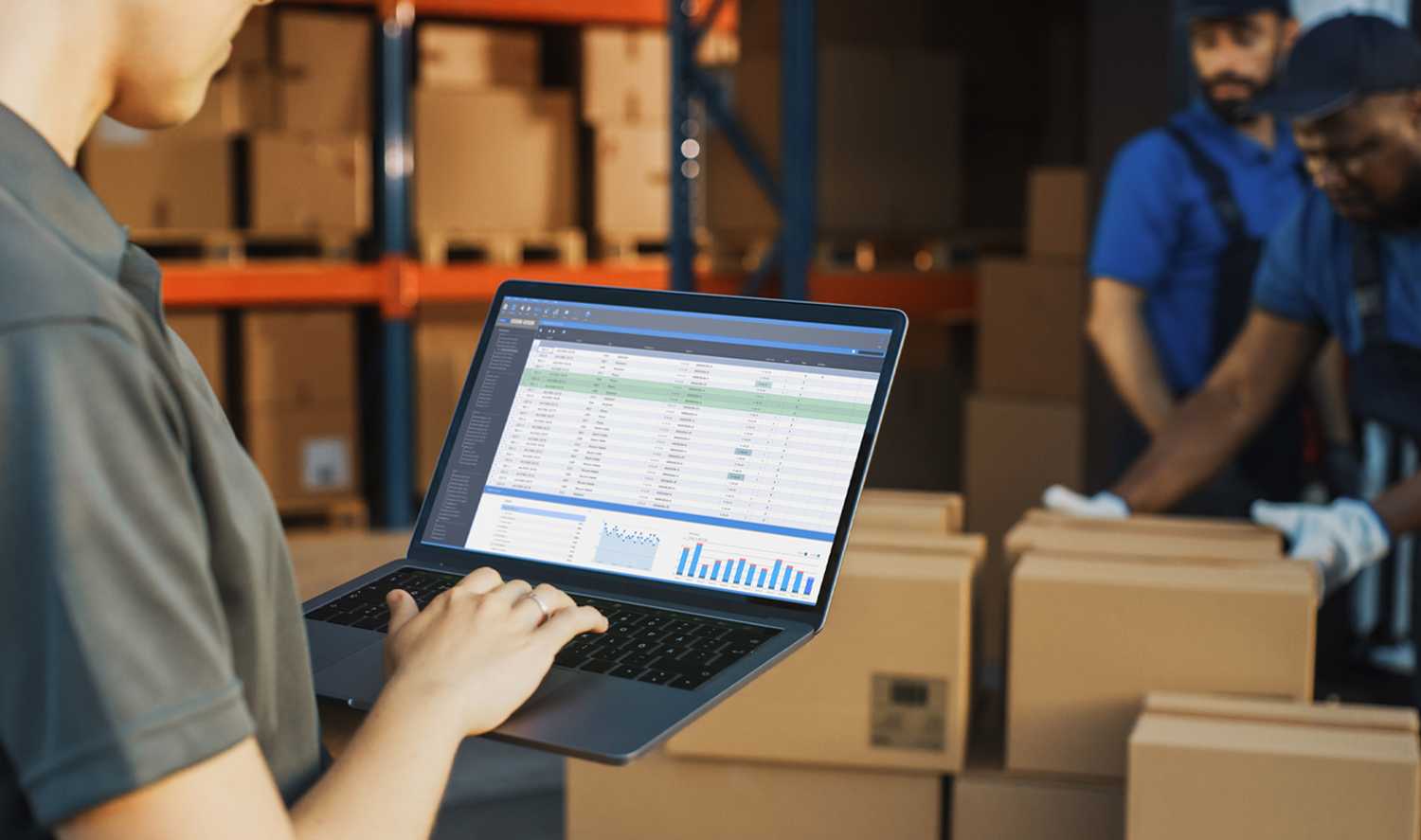One of the biggest problems for retailers in the constantly disrupted pandemic environment is a lack of supply chain visibility, leading to a lack of ability to identify problems before they arise.
In fact, visibility has a direct influence on margins in today’s tight and competitive retail environment.
Consider how technology, including artificial intelligence (AI) and internet of things (IoT), can help enhance visibility. AI can introduce insights into not just your own processes, supplies and trends but also into your suppliers’ processes. It can enable predictive analysis, offering a window into the future so problems can be solved before they even exist, and trends can be taken advantage of before competitors even see them.
IoT devices provide visibility by revealing the real-time flow of goods within your supply chain, including inventory within warehouses and stock that is on the road.
Of course, technology-driven visibility also means far less stock is wasted. Orders are made and matched with patterns of demand that are revealed by data from a powerful CRM system. Products are available when customers want them, meaning overstock ad waste is kept to a minimum.
So, how do you know if your supply chain visibility is where it needs to be?
Do you have a single, real-time view of inventory across all systems?
Who can see how much, and where, your inventory lies? More importantly, who can see it in real time?
Increasingly, your organisation needs deep visibility into logistics so you can respond quickly and flexibly to disruptions. But your customers are also expecting greater visibility – they want you to keep them informed about availability and any changes that might impact it.
- Do your supply chain managers know where everything, from products to raw materials, are in real time? YES / NO
- Do your supply chain managers have a real-time view into the operations of your suppliers, meaning they can see and solve potential issues before they become problems? YES / NO
- Can your customers, via your ecommerce platform, identify whether the products they need are available from the location they prefer in real time? YES / NO
- Can your sales people see where inventory is in real-time, to offer customers another option if it’s not in-store, rather than lose a sale? YES / NO
- Do customers have any self-service options to get insight into product location and availability? YES / NO
For each ‘YES’ answer, give yourself 1 point.
How often are you unable to guarantee inventory?
To provide expected levels of customer service, retail supply chains require accurate inventory forecasting to guarantee supply chain success.
Such a guarantee naturally means retail organisations can forecast both short-term demand and long-term trends in consumer behaviour. Effective forecasting depends on thorough knowledge not only of your product portfolio and the supply chain each product relies on, but also on your customers’ shopping habits.
The guarantee of inventory is a vital ingredient in customer loyalty success. Customers will shop around to find what they need, when they need it. If your retail business can’t supply the desired product, that customer is lost to a competitor.
How often are you unable to guarantee inventory?
- Frequently (0 point)
- Semi-regularly (2 points)
- Only during the most unprecedented disruptions (3 points)
How accurate are your forecasting and predictive analytics?
Leading organisations leverage digital technologies to drive the next wave of supply chain visibility. This has never been more important.
The ability to digitally track merchandise in real time is well understood as critical for an effective supply chain. However, accurate forecasting, or the ability to see clearly into the future, is just as vital.
If your business can forecast demand accurately, it will enjoy a competitive advantage over its competitors.
Retailers able to predict demand accurately and in real time are much less likely to be holding too much or too little stock. Similarly, retailers that know in advance when they will need a new delivery from their suppliers can optimise the efficiency and cost structure of their entire supply chain.
How accurate are your forecasting and predictive analytics?
- Not very accurate – we simply have to make the best decision that we can in the moment. (0 points)
- We know the sector and rely on past experience to tell us what will happen with demand in the future (1 point)
- We’re semi-confident in our ability to forecast demand, using a combination of data and past market behaviours (2 points)
- We are able to identify trends and forecast demand correctly in real-time, using AI-driven data (3 points)
How did you do?

Greater visibility: 9 to 11 points
Congratulations! You’re a top performer. Your business is likely experiencing strong customer loyalty and enjoying a strong level of confidence in its supply chain management. To continue staying ahead of the curve, and to keep responding to a fast-changing environment, ensure you have measures in place to keep evolving your CRM strategy.
Moderate visibility: 6 to 8 points
Your business has made a strong start and realises the value of data. It is also beginning to develop a clear understanding of the powerful connection between customer behaviour and supply chain success. Ultimately, customer behaviour drives every other part of the business. Continue to build your CRM capability and supply chain issues will become easier to manage.
Lower visibility: 0 to 5 points
The challenges you’re experiencing with supply chain management and forecasting of demand are not uncommon – particularly in the unprecedented environment over the last few years. The exciting news is that even incremental steps with your CRM can help you and your customers stay ahead of supply chain disruptions.
Our friendly specialists can help you tailor an approach that’s right for your organisation, wherever you might be in your supply chain transformation journey.





